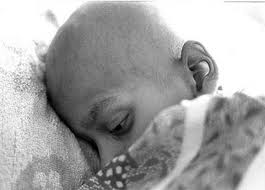Acute lymphocytic leukemia also known as acute childhood leukemia is the most common type of leukemia in children. Acute lymphocytic leukemia is a cancer that affects the blood and bone marrow, a soft tissue located inside the bones where blood cells are made. This type of leukemia affects the immature white blood cells which is the lymphocytes and develops rapidly.
Acute lymphocytic leukemia can also arise in adults, although the diagnosis is not as optimistic.
What are the symptoms of acute lymphocytic leukemia?
Signs and symptoms of acute lymphocytic leukemia may include the following.
- Bleeding of the gums
- Recurrent infections
- Fever
- Recurrent or extreme nosebleeds
- Pale skin
- Lumps caused by enlarged lymph nodes in around the underarm, neck, stomach or groin
- Shortness of breath
- Â Fatigue or weakness
Consult your child’s doctor if you observe of the any constant signs and symptoms that may worry you. Several of the signs and symptoms of acute lymphocytic leukemia in children imitate those of the flu. But the signs and symptoms of the flu may eventually get better. Do not hesitate to go to the doctor if the signs and symptoms do not recover as expected.
What are the causes of acute lymphocytic leukemia?
Acute lymphocytic leukemia arises when the development of bone marrow cell error in its DNA. This error informs the cell to keep on growing and dividing, when a healthy cell would usually die. When this takes place, the production of blood cells goes wrong. An immature cell may produces from the bone marrow that may lead into leukemic white blood cells called lymphoblasts. These unusual cells may not function appropriately and may crowd out the healthy cells.
It is not yet understandable the reason behind the DNA mutations that can develop to acute lymphocytic leukemia. However, doctors have found that most of the cases of this type of leukemia in children are not inherited.
What is the risk factors affecting leukemia in children?
Factors that may enhance the possibility of developing acute lymphocytic leukemia are the following.
- Children that had undergone chemotherapy as a treatment for cancer may have an increased risk of having acute lymphocytic leukemia.
- Being exposed to high level of radiation may also have a greater possibility of developing acute lymphocytic leukemia.
- Certain genetic disorder like the Down syndrome may be related with some increased risk of developing acute lymphocytic leukemia.
What are the treatments for acute lymphocytic leukemia?
The treatments of leukemia in children may include the following.
1.    Chemotherapy.
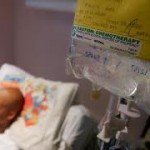 Chemotherapy makes use of the drugs that destroy the cancer cells. This is normally used as an introduction therapy for leukemia in children as well as in adults affected with acute lymphocytic leukemia. Chemotherapy medications can also be used in the maintenance stages.
Chemotherapy makes use of the drugs that destroy the cancer cells. This is normally used as an introduction therapy for leukemia in children as well as in adults affected with acute lymphocytic leukemia. Chemotherapy medications can also be used in the maintenance stages.
2.    Radiation therapy.
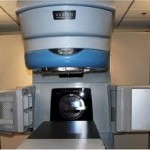 Radiation therapy makes use of high-powered beams like x-rays to eradicate the cancer cells. If the cancer cells may have already affected the central nervous system, the doctor may advise to have the radiation therapy.
Radiation therapy makes use of high-powered beams like x-rays to eradicate the cancer cells. If the cancer cells may have already affected the central nervous system, the doctor may advise to have the radiation therapy.
3.    Targeted drug therapy.
 Targeted drugs use to destroy the specific irregularities present in the cancer cells that make them grow and increase in number. Examples of targeted drug are the imatinib and dasatinib wherein they attack particularly the cancer cells that have a certain irregularities known as the Philadelphia chromosome. These drugs can only be recommended for people affected with acute lymphocytic leukemia and with Philadelphia chromosome.
Targeted drugs use to destroy the specific irregularities present in the cancer cells that make them grow and increase in number. Examples of targeted drug are the imatinib and dasatinib wherein they attack particularly the cancer cells that have a certain irregularities known as the Philadelphia chromosome. These drugs can only be recommended for people affected with acute lymphocytic leukemia and with Philadelphia chromosome.
4.    Stem cell transplant.
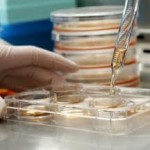 Stem cell transplant may be recommended as consolidation therapy in people with greater possibility of relapse or for treating relapse when it arises. This    therapy may let the person affected with leukemia to re-establish healthy stem cells changing the leukemic bone marrow with leukemia-free marrow. Stem cell transplant will start on having high doses of chemotherapy or radiation to kill any leukemia-producing bone marrow. The marrow will be then replaced by bone marrow from a well-matched donor.  In some cases in adults with acute lymphocytic leukemia can be able to make use of their own bone marrow for transplantation. This may take place if the person with acute lymphocytic leukemia will go into remission and healthy bone marrow is then collected for a future transplant.
Stem cell transplant may be recommended as consolidation therapy in people with greater possibility of relapse or for treating relapse when it arises. This    therapy may let the person affected with leukemia to re-establish healthy stem cells changing the leukemic bone marrow with leukemia-free marrow. Stem cell transplant will start on having high doses of chemotherapy or radiation to kill any leukemia-producing bone marrow. The marrow will be then replaced by bone marrow from a well-matched donor.  In some cases in adults with acute lymphocytic leukemia can be able to make use of their own bone marrow for transplantation. This may take place if the person with acute lymphocytic leukemia will go into remission and healthy bone marrow is then collected for a future transplant.
5.    Clinical experiments.
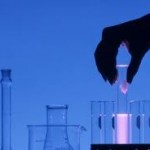 These are clinical trials that make use of latest cancer treatments. This may offer you and your child the opportunity to try the newest cancer treatment but the benefits it will bring are still being evaluated.
These are clinical trials that make use of latest cancer treatments. This may offer you and your child the opportunity to try the newest cancer treatment but the benefits it will bring are still being evaluated.
Consult your child’s doctor of what treatment can be effectively applied to your child with acute lymphocytic leukemia. These treatments of leukemia in children can be very helpful to make their condition get better.
